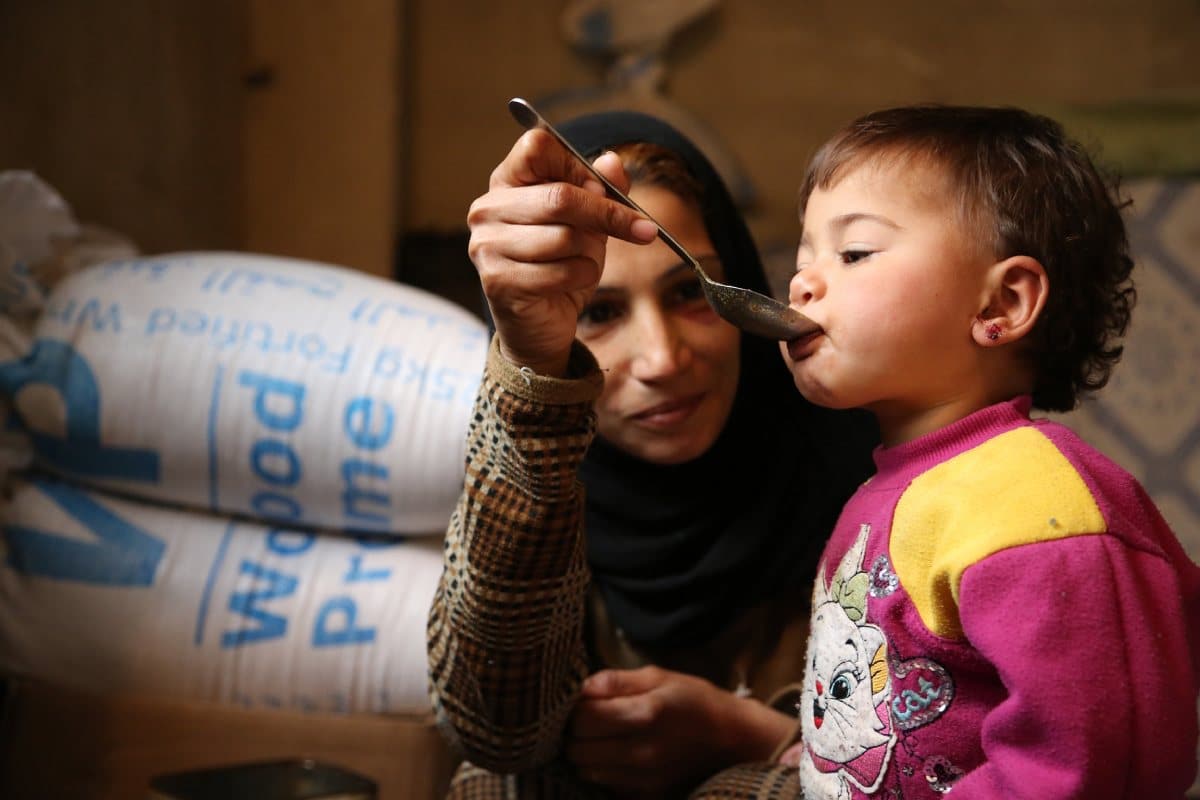WFP Chief warns of record hunger rates in Syria as conflict passes 12-year milestone
Tue 14 Mar 2023
Damascus: An average monthly wage in Syria currently covers about a quarter of a family’s food needs, the UN World Food Programme (WFP) said, highlighting an urgent need for increased humanitarian assistance as the country grapples with the devastating impact of recent earthquakes and a 12-year-long conflict.
Some 12.1 million people, more than 50% of the population, are currently food insecure and a further 2.9 million are at risk of sliding into hunger. Meanwhile, recent data show that malnutrition is on the rise, with stunting and maternal malnutrition rates reaching levels never seen before.
Also, read – Turkey-Syria Earthquake: Death toll crosses 33,000, World Food Programme provides rations and hot meals to victims
“Bombardment, displacement, isolation, drought, economic meltdown, and now earthquakes of staggering proportions. Syrians are remarkably resilient but there’s only so much that people can take,” says Kenn Crossley, WFP Country Director in Syria. “At what point does the world say enough?”
The February 6 earthquakes came as food prices in Syria were already soaring. The selection of standard food items that WFP uses to track food inflation has almost doubled in price in 12 months and is 13 times more expensive than three years ago. The upwards trajectory is expected to continue.
The recent earthquakes have highlighted the urgent need for increased humanitarian assistance in Syria, not only for people hit by the earthquakes, but also for those who were already grappling with sky-rocketing food prices, a fuel crisis, and consecutive climate shocks. Food and fuel prices are at their highest in a decade after years of inflation and currency devaluation.
Stunting rates among children have reached 28 per cent in some parts of the country and maternal malnutrition prevalence 25 per cent in north-east Syria.
A country that used to be self-sufficient in food production now ranks among the six countries with the highest food insecurity in the world, with heavy dependency on food imports. Damaged infrastructure, high cost of fuel and drought-like conditions have slashed Syria’s wheat production by 75 per cent.
WFP provides food assistance for 5.5 million people across the country, a mixture of food distributions, nutrition programmes, school meals, cash assistance, and support for livelihoods, resilience, and social safety nets. Since the earthquake hit north Syria, WFP has reached 1.7 million quake-affected people, including people who already benefit from monthly food assistance.
But a funding crunch for WFP in Syria threatens to curtail the assistance, exactly when people need it most. WFP urgently requires a minimum of US$ 450 million to keep up assistance for over 5.5 million people across Syria for the rest of 2023. This includes US$ 150 million to support 800,000 people affected by the earthquake for six months.
Without sufficient resources, WFP will have to drastically reduce the number of beneficiaries it serves from July onwards, leaving millions of people in deep need without food assistance.
“‘The world has now forgotten us. That’s what we hear from many Syrians, and it’s a stark reminder that we need to do more,” said WFP’s Regional Director for the Middle East, North Africa and Eastern Europe Corinne Fleischer. “We need the funds to continue to provide food for millions of families — until Syrians can feed themselves again.”
As well as providing immediate food assistance, WFP is working on finding long-term solutions to help communities in Syria become less reliant on direct food assistance. Across Syria, WFP supports the rehabilitation of irrigation systems, mills, bakeries, and markets. Such projects carry a greater return on investment compared to traditional food distributions.
WFP Syria hunger rate WFP Syria hunger rate

 Apr 26 2024
Apr 26 2024













